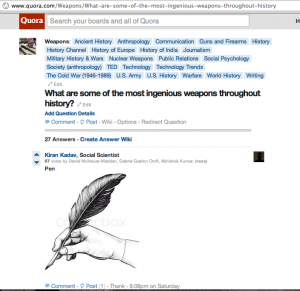In 1999, I was 17 and I had been on Internet, as we used to say, for about 3 years then. I was still at school – in Southern Italy – and as part of our curriculum we had to write a monthly essay, having a choice of topics and styles including that of a newspaper article. The only reason why I chose this was that it was the only one for which our teacher would pre-announce the topic (all other being surprise).
Back then, the Yugoslav Wars had “ended”, pretty much, in 1995. No one had ever heard of Kosovo, a small region of what became Serbia, with a relevant Albanian minority. After alleged genocide and the international community condemning Serbia, despite a veto from the UN Security Council, NATO decided to bomb Yugoslavia.
In those years, there was no Twitter, no Facebook, not even Orkut. Actually, not even Google. Blogging was, maybe, something people would write on their home page (mine was provided by my local ISP, and it had a grey background). But the world fascination with the Internet was getting bigger and bigger. People would start talking to random people in public and private chats. Those were the years of ICQ, the beginnings of MP3 as a music medium – when MP3 files could be searched for on Altavista.
My essay about the Belgrad bombing was born on IRC. I joined the channels #kosovo and #belgrad. I started calling random people, declaring my intentions: I wanted to ask about the war, what it was like being there, what were their feelings about NATO, Kosovo, Serbia.
Most chatters, on both sides, were happy someone was asking about them. Some of them were expats trying to get in touch with relatives; some others managed to get an dial-up internet connection in their garage, turned bomb refuge. I spent a number of nights mostly trying to collect balanced views, but more importantly establishing a direct, sometimes emotional connection with people who were living not that far away – my town being about 600km and a fly away from Pristina – and experiencing a terrible situation, in a very polarised way.
IRC helped me gather those view and write my essay. Internet became to me, in the 90s, a superb means of getting to know people who were far away from me, understanding them, perceiving their experience; despite a limited, text-based, medium, that connection could happen. Real-time journalism was a reality; it was by its nature a one-to-one experience, not a collection of tweets on a given hashtag.
We’re moving away from that, and let me be nostalgic: something has got lost. We’re now damn good at aggregating content, but with all of this aggregation we’re probably failing to make that one-to-one connection. The early Internet facilitated that connection; the current, social-based Internet, paradoxically cannot.
